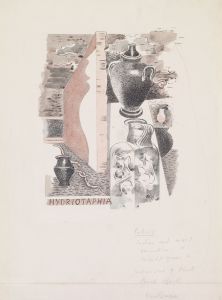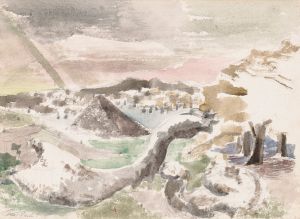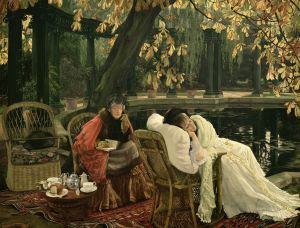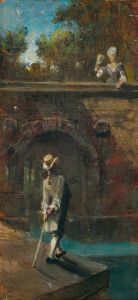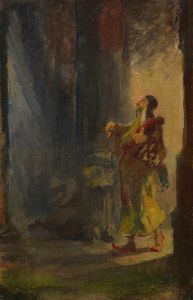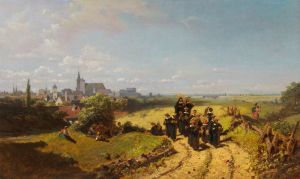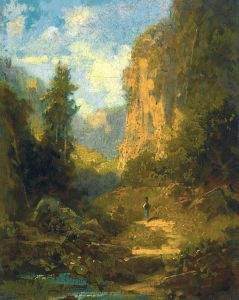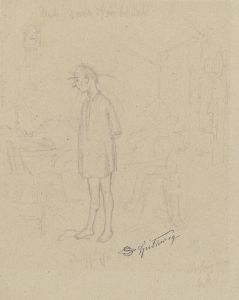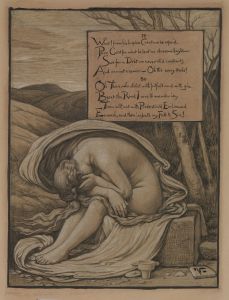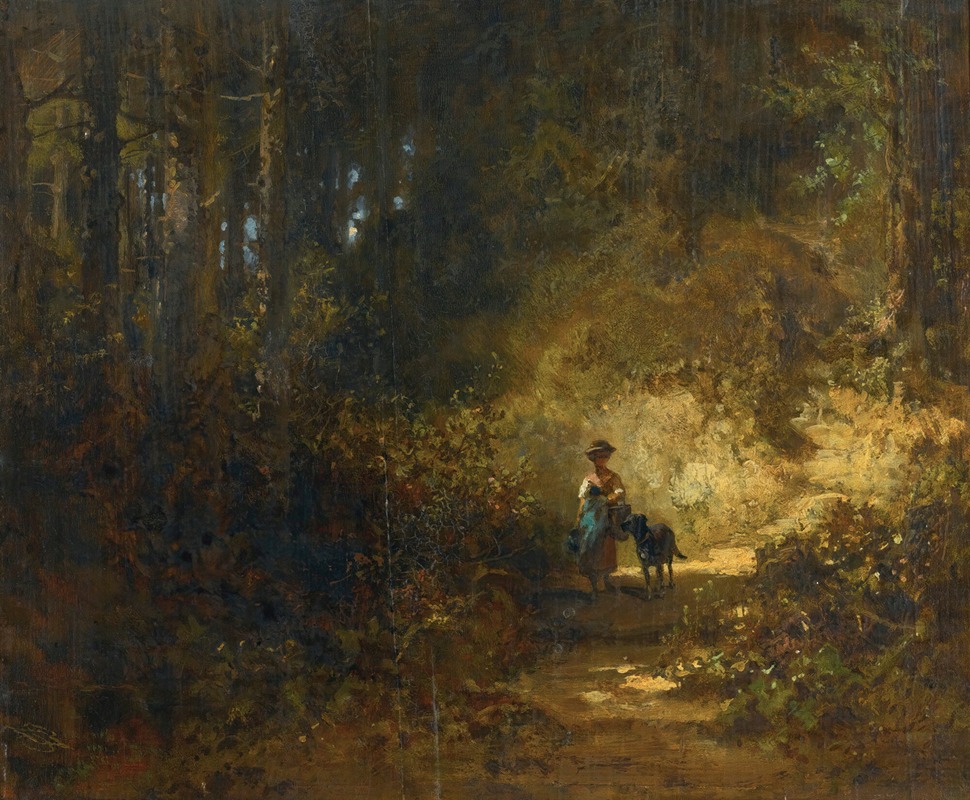
Im Walde
A hand-painted replica of Carl Spitzweg’s masterpiece Im Walde, meticulously crafted by professional artists to capture the true essence of the original. Each piece is created with museum-quality canvas and rare mineral pigments, carefully painted by experienced artists with delicate brushstrokes and rich, layered colors to perfectly recreate the texture of the original artwork. Unlike machine-printed reproductions, this hand-painted version brings the painting to life, infused with the artist’s emotions and skill in every stroke. Whether for personal collection or home decoration, it instantly elevates the artistic atmosphere of any space.
Carl Spitzweg was a renowned German painter of the 19th century, celebrated for his contribution to the Biedermeier period, which emphasized the depiction of middle-class life and the beauty of everyday scenes. One of his works, "Im Walde" (translated as "In the Forest"), exemplifies his skill in capturing serene and idyllic landscapes, although specific details about this particular painting are not extensively documented.
Spitzweg was born on February 5, 1808, in Unterpfaffenhofen, Bavaria, and initially pursued a career in pharmacy before turning to art. His self-taught journey into painting began after a period of illness, during which he discovered his passion for the arts. Spitzweg's works often reflect a gentle humor and a keen observation of human nature, characteristics that have endeared him to art lovers and collectors.
The Biedermeier period, during which Spitzweg was active, spanned from 1815 to 1848 and was marked by a focus on the domestic and the personal. Artists of this era often depicted tranquil scenes, emphasizing the comfort and stability of middle-class life. Spitzweg's paintings are quintessential examples of this style, often portraying quaint village scenes, intimate interiors, and peaceful landscapes.
"Im Walde" fits within this context, likely depicting a tranquil forest scene, capturing the quiet beauty and solitude of nature. Spitzweg had a particular talent for rendering light and shadow, creating atmospheric effects that draw viewers into the serene worlds he painted. His landscapes often feature lush greenery and a sense of depth, inviting contemplation and a momentary escape from the hustle and bustle of urban life.
While specific information about "Im Walde" is limited, it can be inferred that the painting embodies Spitzweg's typical style and thematic focus. His works frequently include small, anecdotal details that add charm and narrative to the scene, encouraging viewers to imagine stories behind the depicted moments.
Spitzweg's legacy is significant in the context of 19th-century German art. His ability to capture the essence of the Biedermeier spirit, with its emphasis on the personal and the picturesque, has ensured his place in art history. His paintings continue to be celebrated for their technical skill, warmth, and the gentle humor that pervades much of his work.
In summary, while detailed information about "Im Walde" is scarce, it is reasonable to conclude that the painting reflects Carl Spitzweg's mastery of landscape art and his ability to convey the serene beauty of nature. His work remains an important part of the Biedermeier period's artistic legacy, offering insights into the values and aesthetics of 19th-century middle-class life in Germany.





